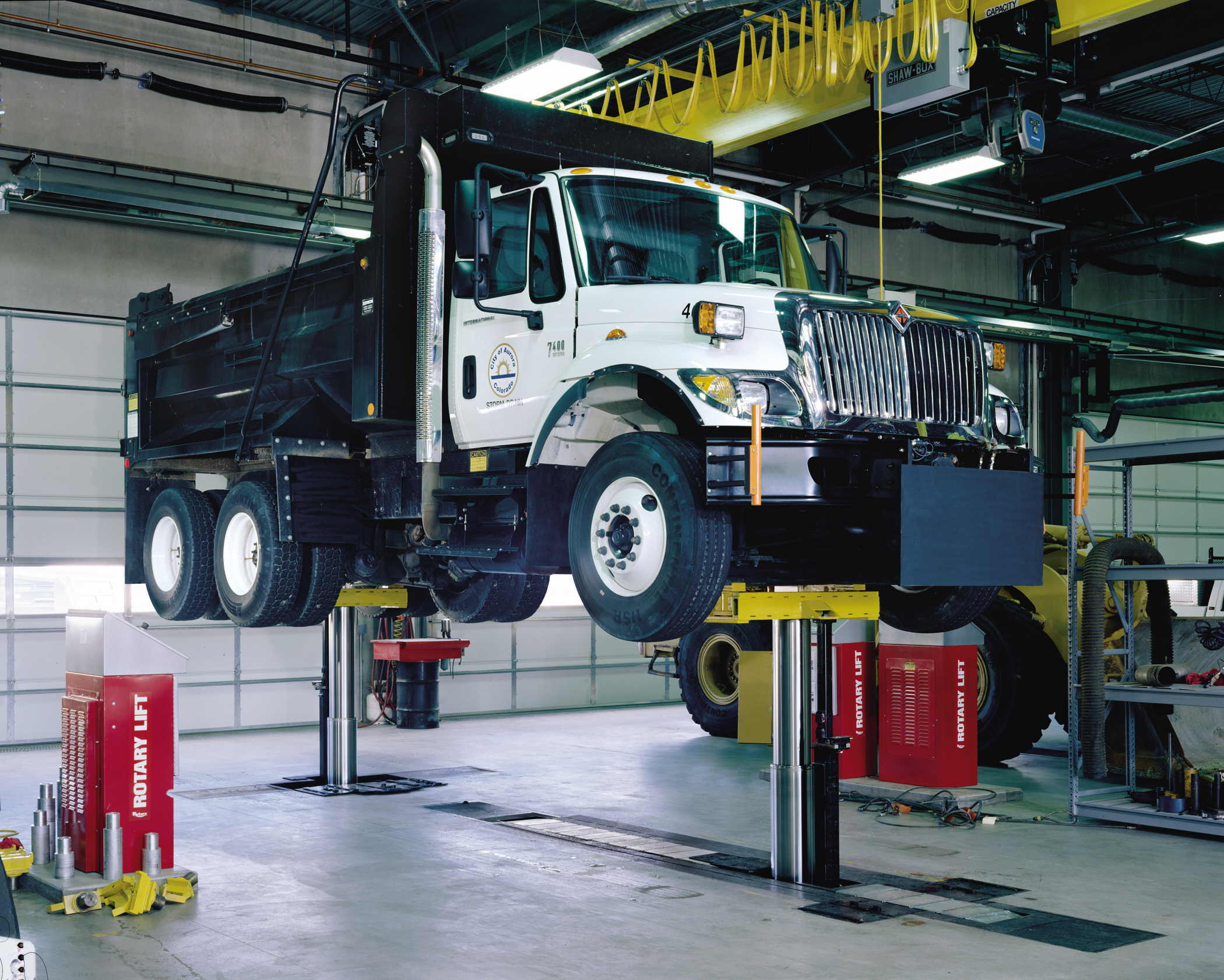Source:
Rotary
When you’re working with equipment that weighs upwards of 20,000 or 60,000 lbs., safety should always be on your mind. Is your shop the safest it can be? Are your techs using equipment appropriately? Here are three important areas to focus on so you can keep your techs safe around truck lifts.
1. Choose the right truck lift
Step No. 1 falls to the decision maker. Choosing a lift that’s appropriate for the jobs that go through your shop is essential. Do you need a mobile column lift that can lift buses? Or is an inground lift, capable of hefting 70,000 lbs., a better fit? Think about your max capacity needs and make sure the lift you choose can handle it – that’s vital to safety. Also think about how tall the vehicles your work on will be and factor that in when considering lift heights.
Do some research and opt for the lift that best fits your needs. The four main truck lift categories to choose from include:
• Mobile column lifts: This type of lift offers flexibility in your shop. With a small footprint, these moveable columns can be stored in a small area and moved from job to job as needed. Techs can easily position the battery-powered adjustable wheel forks and then lift and lower quickly without the hassle of cords.
• Drive-on lifts: These four-post lifts work like a runway where you drive on and then lift. They’re available in a variety of capacities and styles to meet the needs of a large range of vehicles.
• 2-post lifts: 2-post above-ground lifts are permanent lifts that have adjustable arms that attach to a vehicle’s carriage assembly. You’ll see options like low-ceiling models and dual controls.
• Inground lifts: These built-in lifts are typically designed to handle the biggest of the big jobs. Look for features like zero clearance in the down position and versatile saddle compatibility.
2. Teach techs to operate truck lifts safely
Once you have the right lift for the job, it’s important to make sure the mechanics using it know how to do so safely and correctly. Set them up for success by making sure they have the right accessories and adequate training. For instance, is the saddle or carriage assembly attachment compatible with the vehicles they’re lifting? To properly use a lift, they’ll need the right equipment.
Other considerations include:
• For mobile lifts, work on level ground
• Make sure wheel forks or other attachments are aligned properly
• Always make sure all techs are clear of the lift before raising or lowering
• Be sure to give new employees plenty of training before they begin using a lift
3. Be mindful of lift maintenance
Today’s lifts are designed to minimize maintenance, but it’s important that mechanics know what to keep an eye out for. Each time they use a lift, techs should pay close attention to how the lift is operating. Here are a few things they should do:
• Watch for frayed or stretched cables
• Periodically check to make sure anchor bolts are secure
• Check fluids on hydraulic lifts
• Look for fluid leaks or corrosion
• Ensure contact points aren’t worn
For a more in-depth breakdown of what you need to know when it comes to lift maintenance, see “5 signs your lifts needs to be repaired.”
You can never be too careful. That’s especially true when working with heavy-duty trucks and truck lifts. Provide regular training and reminders to staff, and you’ll be on your way to creating a lasting culture of safety.